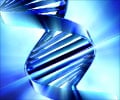Small critical organs have evolved better anticancer mechanisms when compared with bigger organs, according to a few researchers.

- Cancer of critical organs like the heart, brain or the uterus occurs less often than certain other types of cancer.
- Cancers of large organs or organs that occur in pairs probably accumulate carcinogenic malformations.
- Critical organs probably have evolved to have certain anti-cancer properties.
- Incidence of lung cancer has been attributed to smoking.
- Incidence of cervical cancer is attributed to the presence of sexually transmitted human papilloma virus.
- Incidence of colon cancer is attributed to polycyclic hydrocarbons and other carcinogens present in food.
Evolutionary Antiquity in Organ Cancer Incidence
The discrepancies in the frequency of certain organs have been studied previously with Jamie A Davies in the paper titled ‘Inverse Correlation Between an Organ's Cancer Rate and Its Evolutionary Antiquity’ in the Journal Organogenesis discussing the evolutionary aspect of organ cancer development. The paper discusses that certain organs developed later than other organ systems. This led to evolutionary antiquity in certain organs with two possibilities attributed to cancer rate discrepancies which include -- The newly developed organs had less time for selection pressure to remove neoplastic tendencies in the newer organs.
- Another possibility that is discussed in the paper is that newer organs have more complex genes that are more prone to neoplastic changes, leading to the development of cancer.
Evolutionary Biology in Cancer Incidence
Frédéric Thomas, an evolutionary biologist and his team from the Center for Ecological and Evolutionary Cancer Research in France along with senior author Beata Ujvari from Deakin University in Australia have propounded the belief that cancer incidence could have an evolutionary angle to them, adding a fresh perspective to the already existing beliefs.According to the authors whose opinion was published in the journal Trends in Science , organs that were bigger or which were paired had a greater tolerance for cancer than smaller critical organs like the brain, heart or uterus. This means that larger organs can tolerate cancers better than smaller critical organs and have developed fewer defence mechanisms.
Thomas says "The organs that are the most important to keeping you alive and capable of reproduction, such as the heart, brain, or uterus, may enjoy a better protection against cancer, all other things being equal. We are not saying that this is the main factor to explain the different susceptibility of organs to cancer, but it is a factor that contributes with others."
Evolution Has Favored Natural Selection of Anti-cancer Properties of Certain Organs
According to the authors, natural selection has given preference to anti-cancer properties in small organs that are critical. This could be due to the fact that larger organs can accumulate a lot more cancerous malformations while even a small number of cancerous malformations in small organs could be critical.Thomas adds, "Organs that are large or in pairs could potentially accumulate larger numbers of oncogenic manifestations without being impaired, whereas small and important organs like the pancreas could be easily compromised with only a few tumors inside"
The theory is based on the premise that small critical organs will either
- Not tolerate the growth of tumors and lead to annihilation of the being. There will not be dissemination of the mutation in the form of offspring as the individual or being cannot survive. Therefore, natural selection would ideally lower the incidence of cancer in such critical and small cancers.
- Or have developed anti-cancer properties that fend off potentially cancerous situations or conditions. The development of such mechanism could, too, be dictated by natural selection as these organs are critical.
Ongoing Research
The Deakin University, Australia and The French National Center for Scientific Research (CNRS) have formed an International collaboration to study cancerous as well as pre-cancerous lesions in the various organ systems in mice. The results of the study will aid in throwing more light on the theory.References:
- Jamie A Davies “Inverse Correlation Between an Organ's Cancer Rate and Its Evolutionary Antiquity” Organogenesis, 2004.















